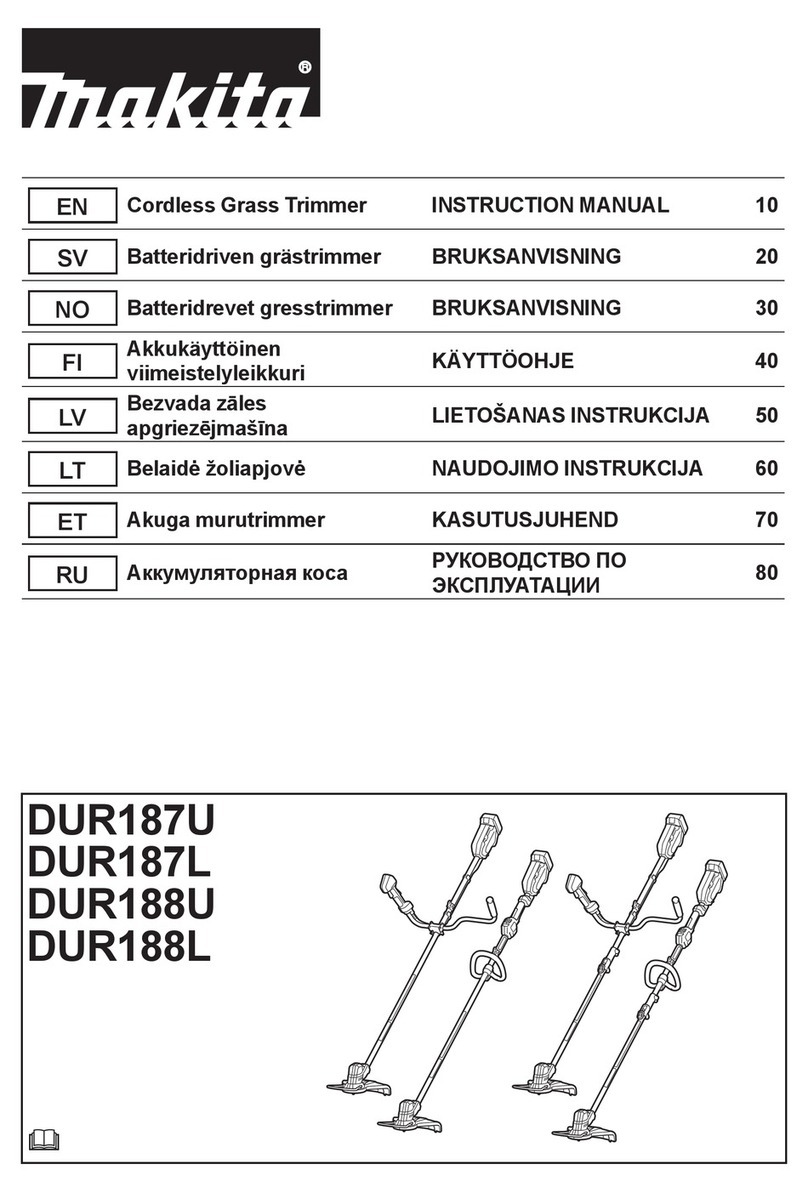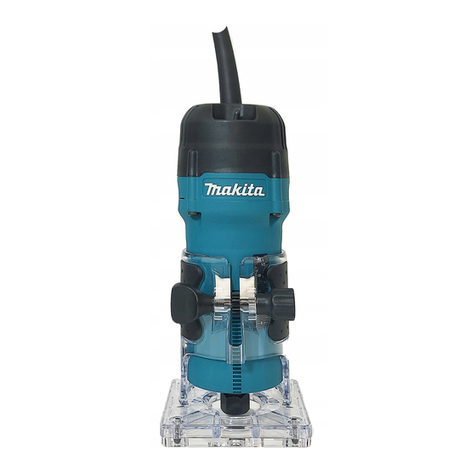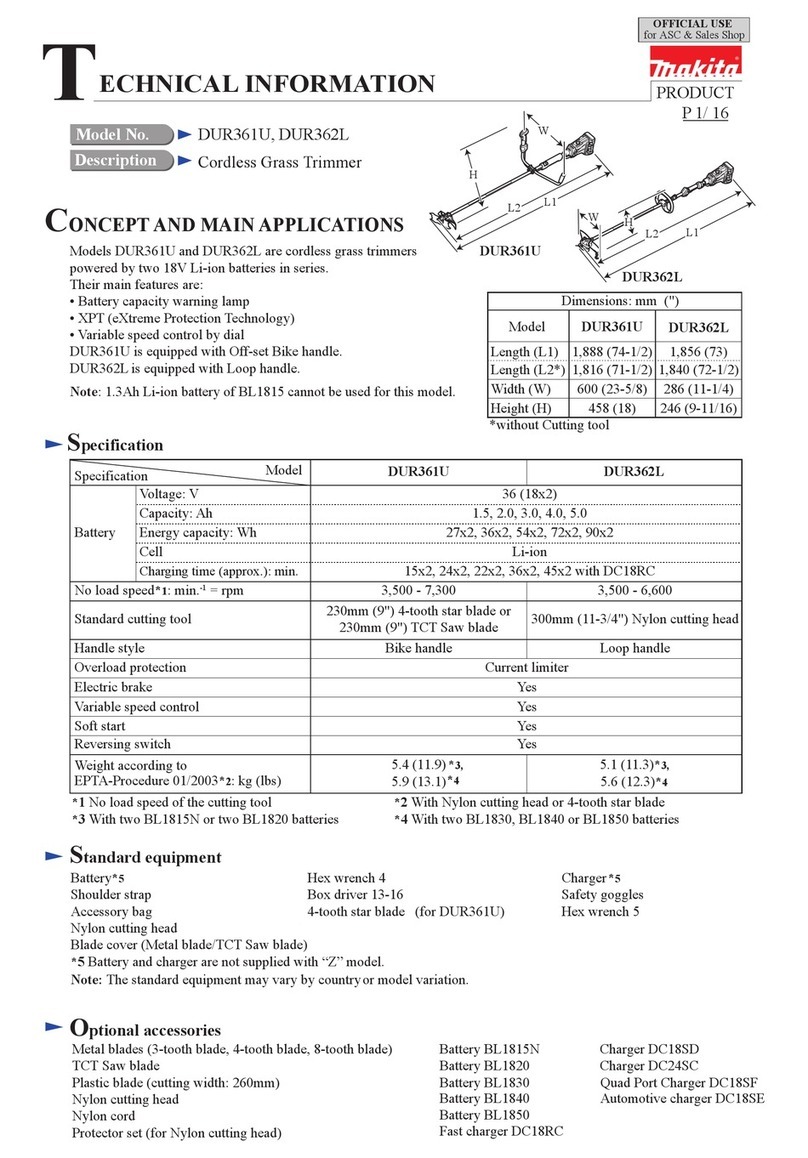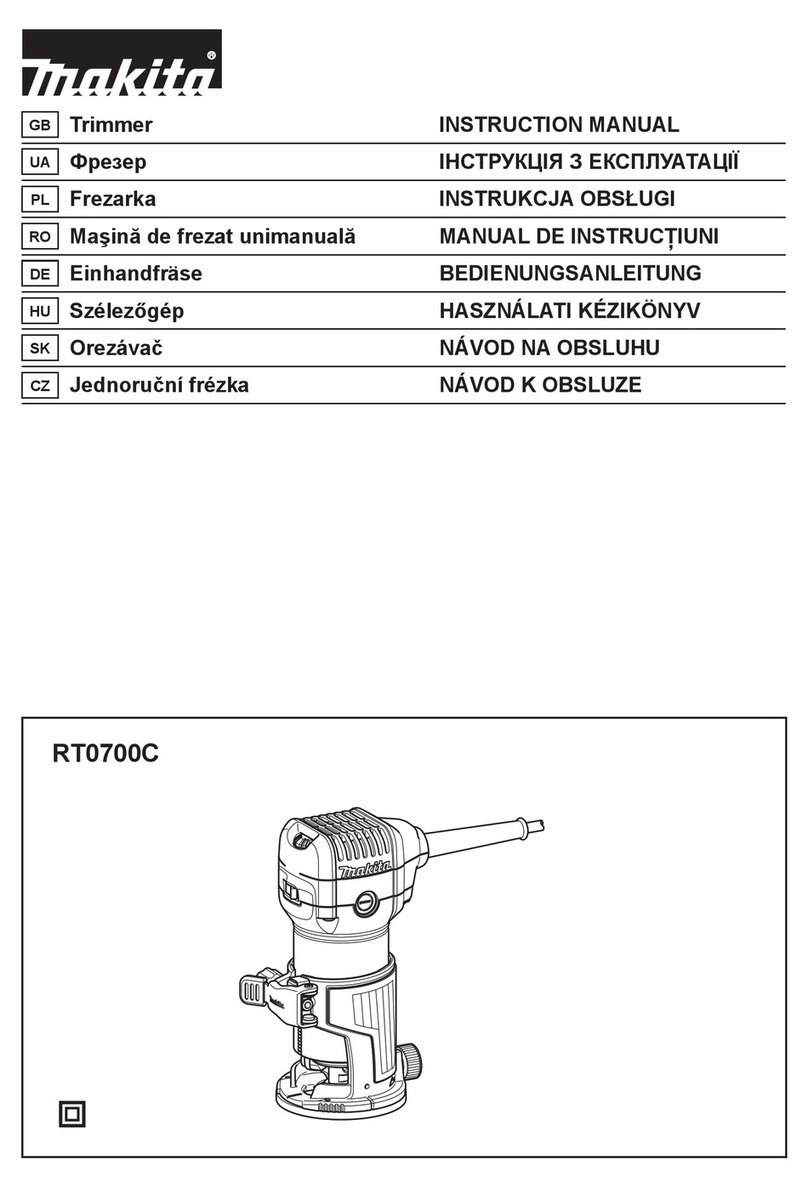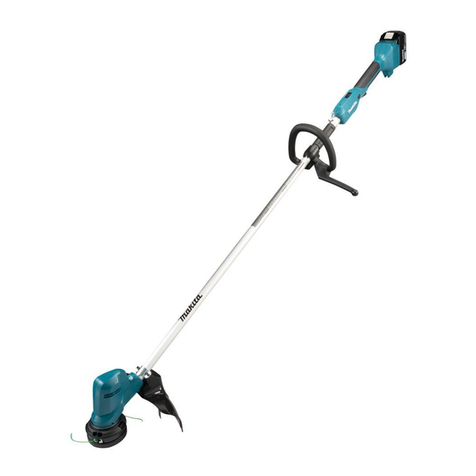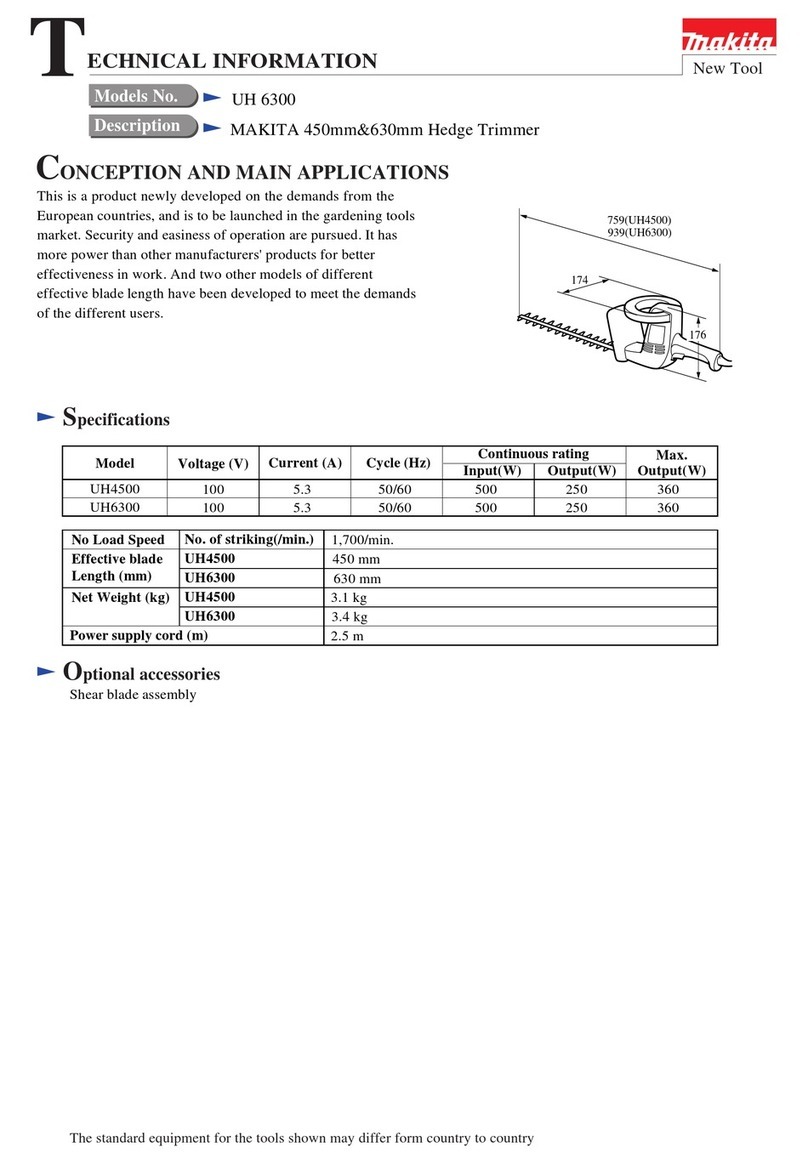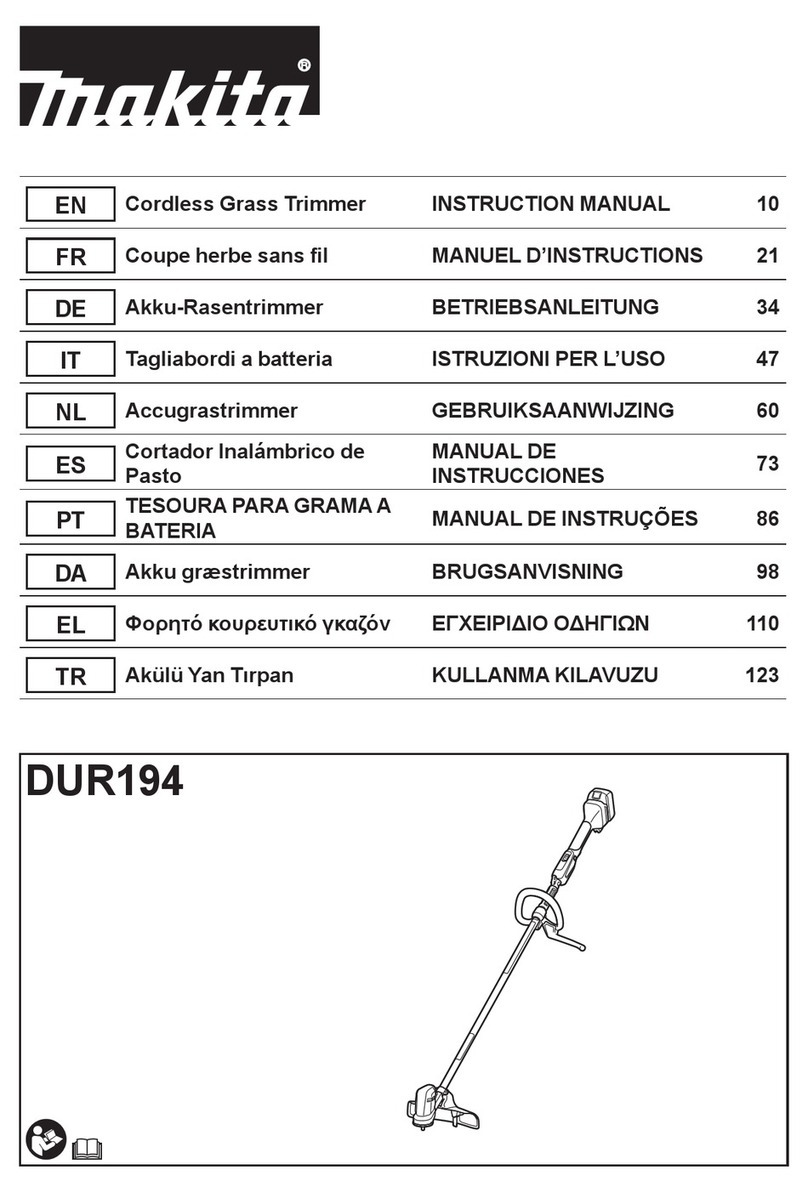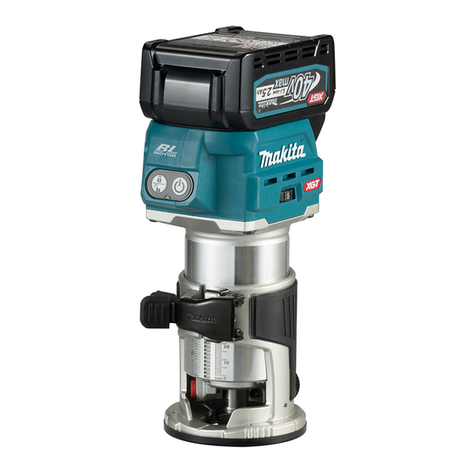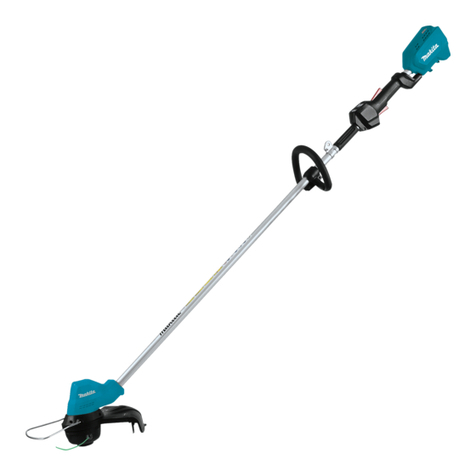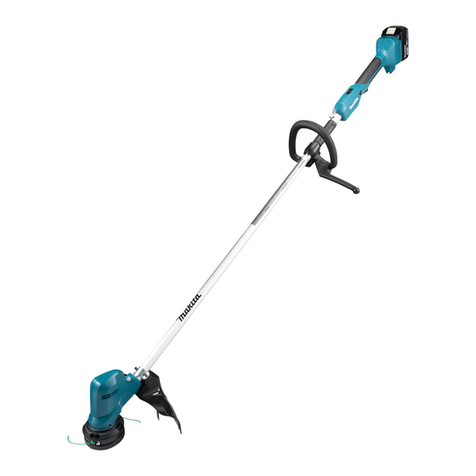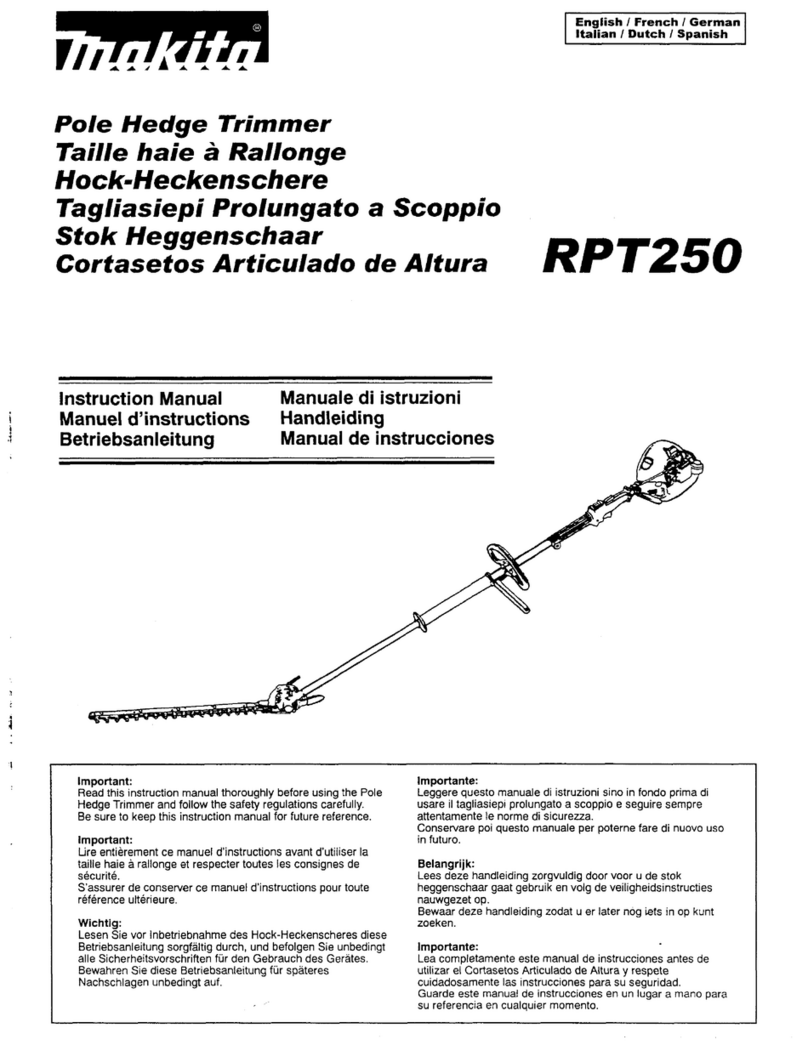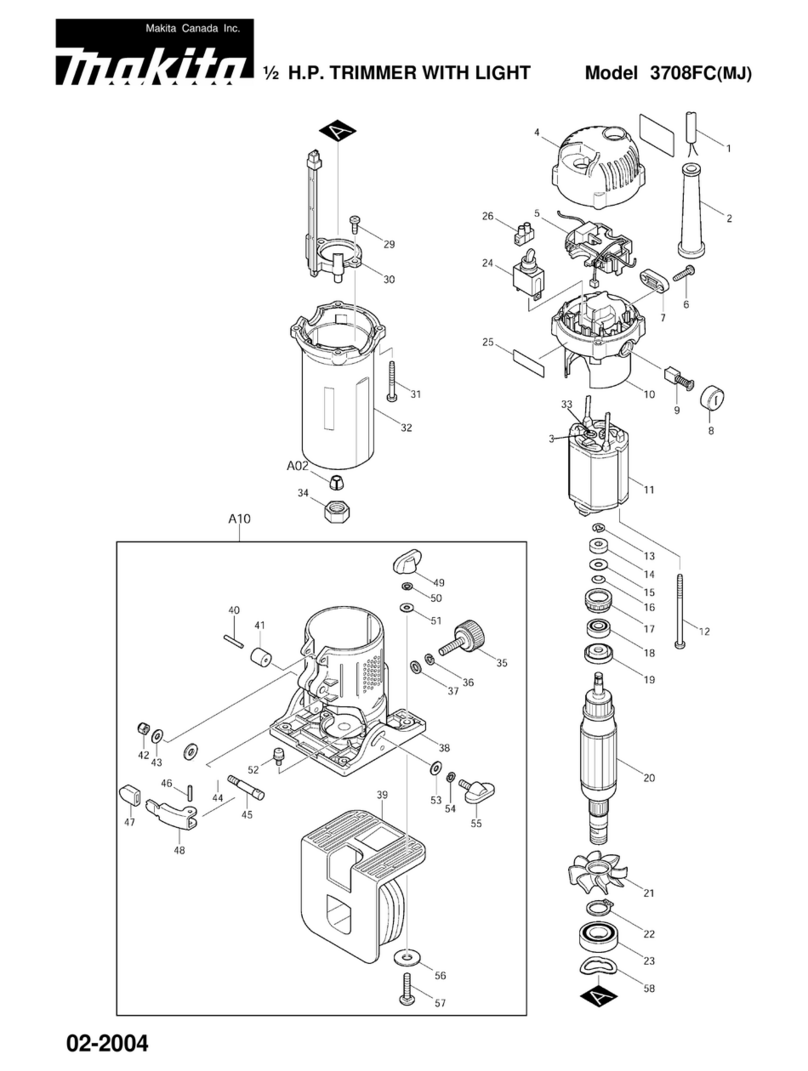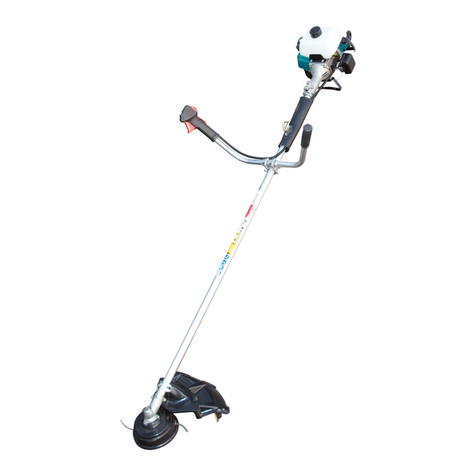
3ENGLISH
20. Use safety equipment. Always wear eye pro-
tection.Dustmask,non-skidsafetyshoes,hard
hat, or hearing protection must be used for appro-
priate conditions.
21. Be aware that this appliance is always in an
operating condition, because it does not have
to be plugged into an electrical outlet.
22. Do not operate appliances in explosive atmo-
spheres, such as in the presence of ammable
liquids, gases, or dust. Appliances create sparks
whichmayignitethedustorfumes.
23. A battery operated appliance with integral
batteries or a separate battery pack must be
recharged only with the specied charger for
the battery.Achargerthatmaybesuitableforone
typeofbatterymaycreateariskofrewhenused
withanotherbattery.
24. Use battery operated appliance only with spe-
cically designated battery pack.Useofany
otherbatteriesmaycreateariskofre.
25. Remove adjusting keys or wrenches before
turning the appliance on.Awrenchorakeythat
is left attached to a rotating part of the appliance
mayresultinpersonalinjury.
26.
Do not use appliance if switch does not turn it
on or o. An appliance that cannot be controlled
with the switch is dangerous and must be repaired.
27.
Use only accessories that are recommended by
the manufacturer for your model. Accessories
thatmaybesuitableforoneappliancemaycreatea
riskofinjurywhenusedonanotherappliance.
28. Appliance service must be performed only by
qualied repair personnel. Service or mainte-
nanceperformedbyunqualiedpersonnelmay
resultinariskofinjury.
29. When servicing an appliance, use only identi-
cal replacement parts. Follow instructions in
the Maintenance section of this manual. Use of
unauthorized parts or failure to follow Maintenance
instructionsmaycreateariskofshockorinjury.
30. Before cutting grass, remove foreign matter
such as rocks and large sticks from the work
area. Be careful not to catch foreign matter
between blades, otherwise blades may be
jammed.Ifthishappens,switchtheapplianceo.
Then remove the obstruction from the blades.
31. When not in use, be sure to cover the blades
with blade cover.
32. If the blades stop moving due to the stuck of
foreign objects between the blades during
operation, switch o the tool and remove the
battery cartridge, and then remove the foreign
objects using tools such as pliers. Removing
theforeignobjectsbyhandmaycauseaninjury
forthereasonthatthebladesmaymoveinreac-
tiontoremovingtheforeignobjects.
33. During operation, keep bystanders or animals
at least 15 m (50 ft.) away from the tool. Stop
the tool as soon as someone approaches.
34. Hold the tool rmly when using the tool.
35. Avoid unintentional starting. Do not carry the
tool when the battery cartridge is installed
and with nger on the switch. Make sure that
the switch is o when installing the battery
cartridge.
36. When not in use, attach the blade cover to the
tool and store the tool indoors in dry, and high
locked-up place, out of reach of children.
37. When attaching or removing the blade cover,
be careful not to injure your hands.
38. Before operation, examine the work area for
wire fences, stones, or other solid objects.
They can damage the blades.
39. Check the hedges and bushes for foreign
objects, such as wire fences or hidden wiring
before operating the tool.
Battery tool use and care
1. Prevent unintentional starting. Ensure the
switch is in the o-position before connecting
to battery pack, picking up or carrying the
machine.Carryingthemachinewithyournger
on the switch or energizing machine that have the
switch on invites accidents.
2. Disconnect the battery pack from the machine
before making any adjustments, changing
accessories, or storing machine. Such preven-
tivesafetymeasuresreducetheriskofstartingthe
machineaccidentally.
3. Recharge only with the charger specied by
the manufacturer. A charger that is suitable for
onetypeofbatterypackmaycreateariskofre
whenusedwithanotherbatterypack.
4. Use machines only with specically desig-
nated battery packs.Useofanyotherbattery
packsmaycreateariskofinjuryandre.
5. When battery pack is not in use, keep it away
from other metal objects, like paper clips,
coins, keys, nails, screws or other small metal
objects, that can make a connection from one
terminal to another.Shortingthebatterytermi-
nalstogethermaycauseburnsorare.
6. Under abusive conditions, liquid may be
ejected from the battery; avoid contact. If con-
tact accidentally occurs, ush with water. If
liquid contacts eyes, seek medical help.Liquid
ejectedfromthebatterymaycauseirritationor
burns.
7. Do not use a battery pack or machine that is
damaged or modied. Damaged or modied
batteries may exhibit unpredictable behaviour
resulting in re, explosion or risk of injury.
8. Do not expose a battery pack or machine to
re or excessive temperature. Exposure to re
or temperature above 130°C (265°F) may cause
explosion.
9. Follow all charging instructions and do not
charge the battery pack or machine outside of
the temperature range specied in the instruc-
tions.Chargingimproperlyorattemperatures
outsideofthespeciedrangemaydamagethe
batteryandincreasetheriskofre.
10. Have servicing performed by a qualied repair
person using only identical replacement parts.
Thiswillensurethatthesafetyoftheproductis
maintained.
11. Do not modify or attempt to repair the machine
or the battery pack except as indicated in the
instructions for use and care.

